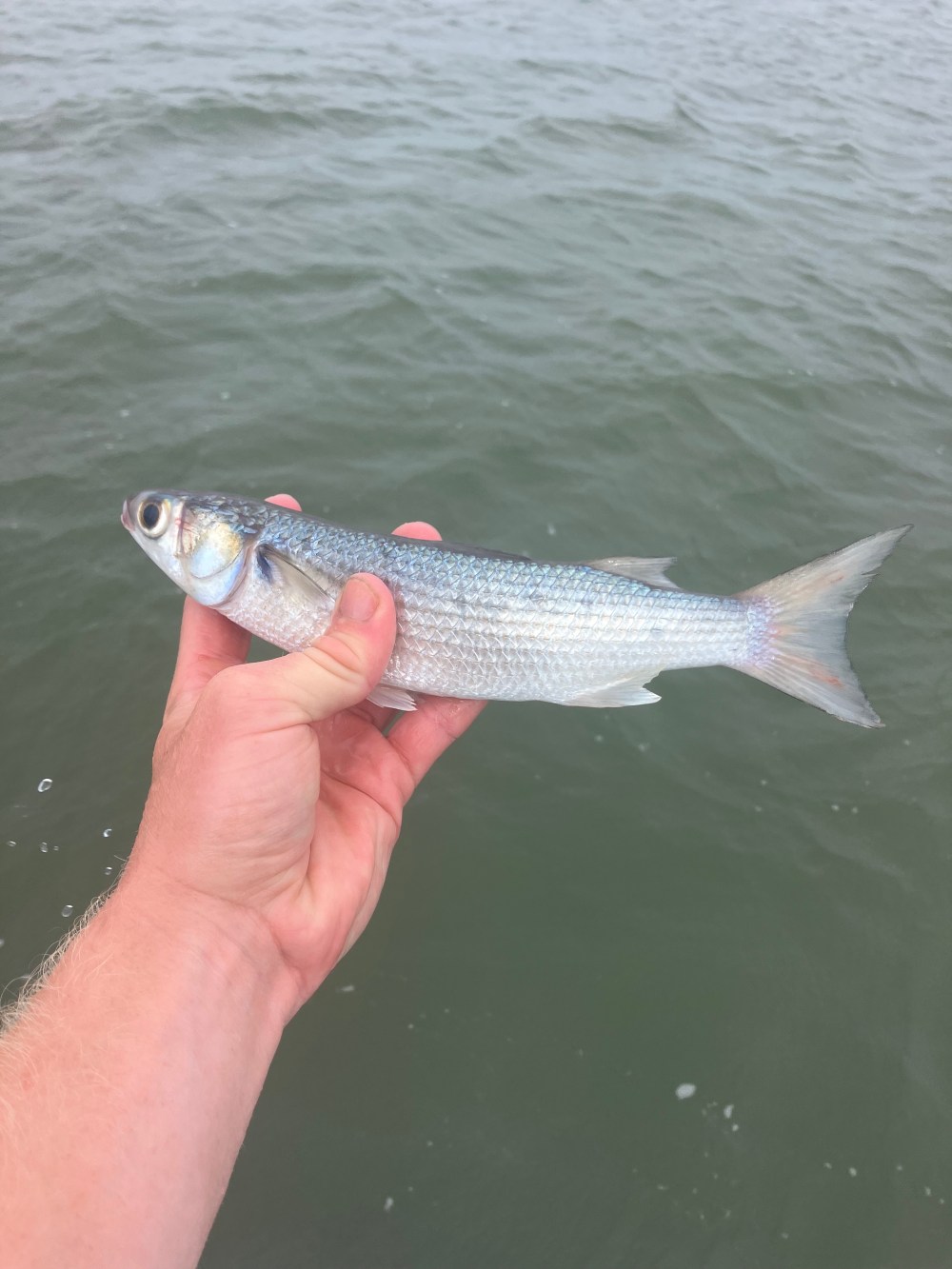Mullet Run
Late August through early September is when seasons in the low country start to change. Although it is still warm in the Charleston area, the changes can be subtle. The marsh grass also called spartina (how did you read it Sparh-tie-nuh or Sparh-tea-na?) will start to hint at a golden color. Migration of birds, fish, sharks, and more creatures will follow. One interesting migration we can see locally and usually is in September, is the mullet run.
This is when the mullet’s yearly migration begins. Usually it occurs in September through November and the peak migration can change from year to year. The mullet (bottom feeding, bullet head shaped fish) will swim from estuaries to southern warmer waters or off shore areas down the east coast to spawn. A dip in water temperature sometimes during a “false fall” will help trigger this migration event.

A mullet held by Capt. Joseph!
Because mullet are running in mass quantities predators are drawn to this migration. Tarpon, sharks, birds, and fishermen are some of the predators that enjoy and profit off of this ecological event!
Our bossman and wildlife lover/avid fisherman/great outdoorsman Shane stated,
“It [the mullet run} starts here end of August typically. You see lots of swirls and large mullet jumping usually several feet from the edge of the spartina at high tide. You will also notice dolphin, shark and tarpon blow ups in the inlets especially at slack tides. From my observations the run usually peaks the 1st week in September but can vary—It’s different every year. Around 12 years ago it was the craziest I have ever seen. The mullet were so thick between 7 Reaches Creek and Dewees Inlet. Big mullet were everywhere and sharks were launching out of the water while dolphins were going nuts. Mullet seemed so thick you could walk across the waterway on them. I mean thousands upon thousands. I used to always get some for my dad to smoke. They are delicious smoked and not bad fried if cooked fresh. I would make smoked mullet dip and it would be the hit of the party!”.
Fish migrate for several reasons including growth/life cycle, spawning, avoiding harsh conditions, temperature triggers just to name a few. Other fish migration examples are salmon, bluefin tuna, eels, striped bass, sardines and herring! There are many aquatic and avian species that benefit from fish migrations so it is an excellent time to go wildlife viewing or fishing! For us in the low country the mullet run is a great indicator that fall is coming!

Group red fish chasing mullet in shallow waters. Captured on drone by Capt. Joseph
